As the weekend approached, I kept a keen eye on the weather. The marine forecast looked better for Sunday than Saturday. The “iffy” factor is that NOAA weather is not always too accurate. This time they were pretty close. Saturday morning brought some wind and from what I heard later – a snotty ocean. Sunday morning brought cool temperatures and sunny skies. We left the dock at 7:30 am to get an early(?) start on some of the other boaters. Finding an open spot on the artificial reef has been difficult in the last few weeks. My good friend, Charlie Raspantini, tells me that it is because the fluke fishing has been pretty poor and with blackfish (tautog) season open, many fishermen are opting to wreck fish.
I am on a quest this season to try and shoot wide angle underwater photos for the entire season. This is week number three. My plan is to try and visit artificial reefs that I have not shot in digital format and also try and do two different sites on each day. The first two weeks only allowed for one dive per day and I was able to photograph the Veronica M and the Colleen tugs on the Axel Carlson Reef off Bayhead, New Jersey.
Our destination today is the Sea Girt Artificial Reef off Sea Girt, New Jersey. I had hoped to make my first dive on the Spartan, an 85’ canal tugboat that sits in 70’ of water at the southwestern end of the reef. When we arrived, there was a fishing boat on the wreck so we decided to head for the G.A. Venturo tug, a 90’ long tugboat sunk in 1996. Our good friends, Paul and Ruth Hepler, who run the Venture III, a dive boat out of Shark River where already anchored into the wreck and told us that they would probably stay there for both of their dives. We decided to move onto something else.
There were a lot of fishing boats on the reef and I thought that we should try something that we had never been on before. I wanted to dive a tugboat because the barges that are sunk on the reef don’t make very photogenic subjects. There is a site called the Restorer Tug at the northern end of the reef. It is a 62’ long tug that went down on Friday, December 19, 1997. Although the Restorer was supposed to be a planned sinking, it didn’t happen that way.
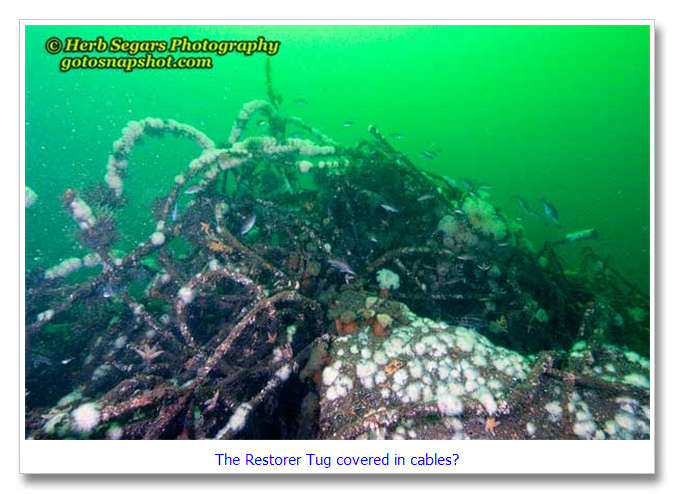
A tugboat was hauling the Restorer Tug and the Golden Eagle trawler to their final resting place when the Restorer started sinking. The crew aboard the towing tug were able to cut the line before the Restorer started dragging the tug under. The Golden Eagle was on another tow line and it was catapulted very close to the towing tug but nothing bad happened. The Golden Eagle was sunk north of the Restorer.
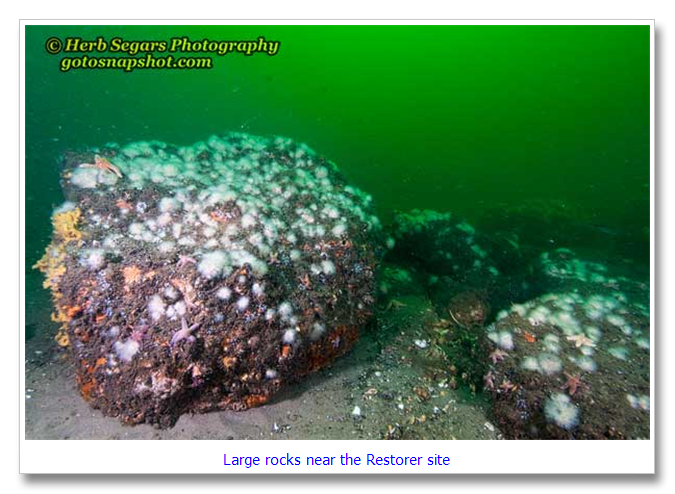
It can be difficult to anchor into a 62’ long vessel. It is less than twice the length of our 33’ boat. We made a couple of tries and finally the wreck anchor seemed secure in the wreckage. My dive buddy, Beth Dalzell and I started to suit up as my wife, Veronica, and Beth’s husband, Wes, helped us along. Beth got into the water first and took her underwater camera. I followed and Veronica handed my camera setup to me and off we went.
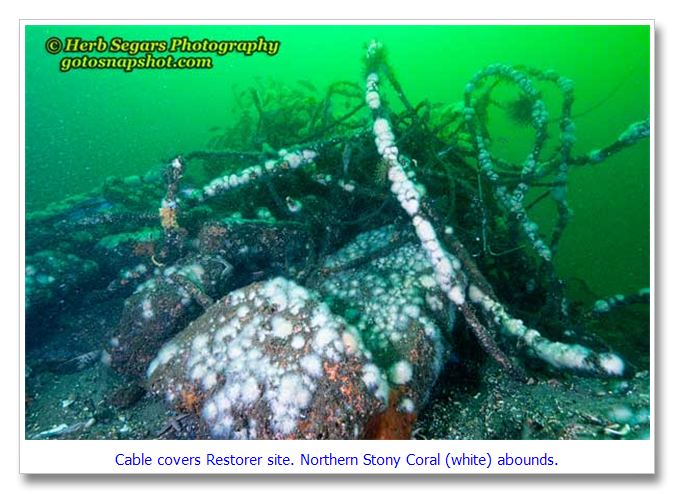
When we got to the bottom, we were surprised. What we saw didn’t look like a tugboat at all. There was something there but it was covered with cable that was overgrown with northern stony coral, sea anemones and tubularian hydroids. The visibility was about twenty feet, the temperature was a brisk 55° F, our depth was 62’ and the bottom was sandy.
There were a lot of fish swimming around the wreckage(???). We saw blackfish, black seabass, bergalls (cunner) and plenty of common sea robins zipping around the sand. It didn’t take long to get all the way around the wreckage and I began to wonder if perhaps this wasn’t the tug and that it was somewhere close by. Normally, I would use a wreck reel to explore. A wreck reel looks like a plastic or metal fly rod reel with a few hundred feet of line on it. You clip off one end to the wreck near the anchor line and then as you swim away, you let line out and when you are ready to return to the wreck (and the anchor line), you reel in the line and it takes you right back. I have found that in the past using a wreck reel and a housed camera with dual strobes has caused me no end of problems. I have gotten wrapped up in the line and had to gather it into my bug bag and get untangled when I got back to the boat.
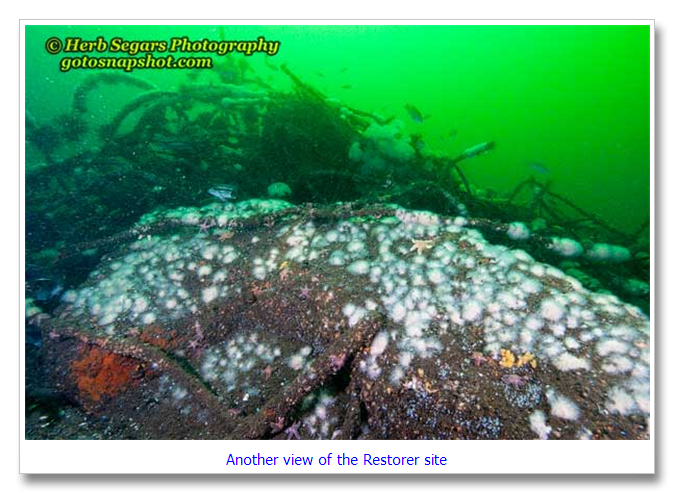
Moving away from the wreck without a reel in twenty feet of visibility is tricky at best. I found a couple of pieces of wreckage leading away from the wreck so I followed, knowing that I could just turn around and come back. I didn’t find a tug but I found some huge chunks of rock. They were covered with northern stony coral and frilled anemones and I checked their bottom edges for North American lobster but found none.
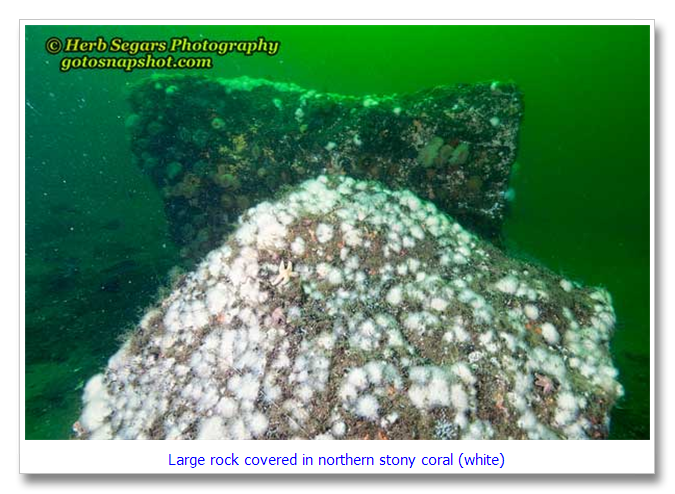
As usually happens to me, I took a few photos and got disorientated. I started back to the wreck and realized that I wasn’t sure which way to go. I swam away from the rocks and kept looking back to keep them in sight. When I didn’t find the wreck right away, I decided to get about fifteen feet off the bottom and try the same procedure again. This worked and I saw a dark hulk in front of me and knew it was the wreck. I was right. This may sound more dangerous than it really is. I knew that if I couldn’t find the wreck, I would just ascend to the surface wherever I was. I have my buoyancy pretty neutral and I don’t have any trouble making an ascent without an anchor line. If we were in deeper water or if there was a current running, I would never have left the wreck. The downside to making a free ascent is the swim back to the boat.
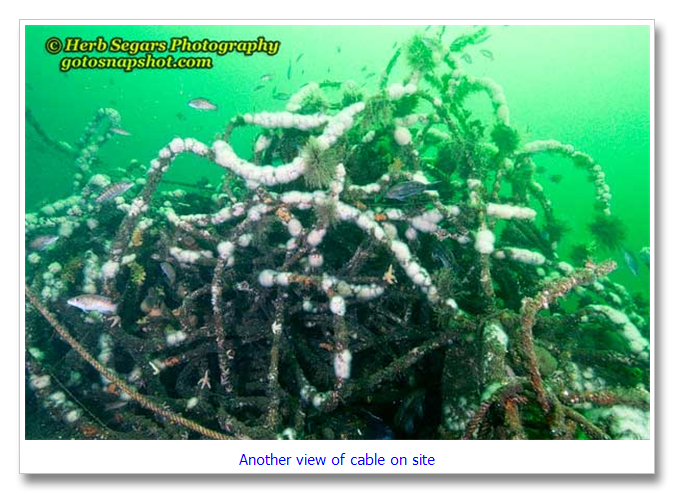
This turned out to be one of those dives that you only want to do once. Beth and I got photos and we got to dive on a place that we had not been before. If this had been a tugboat, I probably would have enjoyed the dive more but the tugboat may be under all that cable that we found. It was being towed and the tow cable was severed when it started to sink, it may have covered the wreck or the wreck is buried in the sand and covered with cable. I don’t know for sure. I am hoping that someone reading this blog knows more about the Restorer Tug than I and can clue me in.
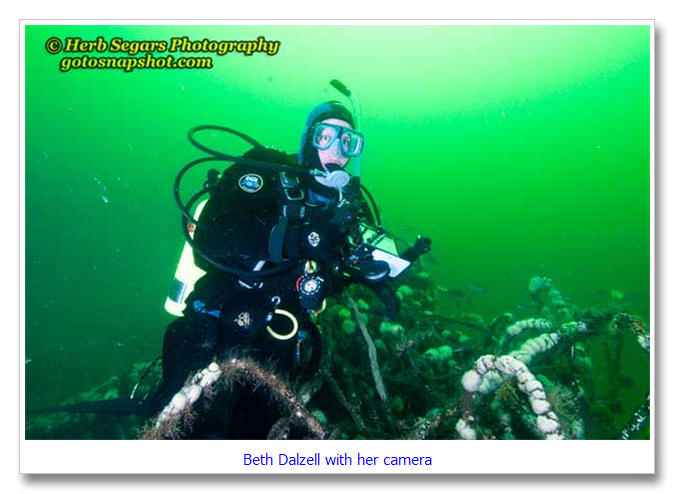
On the surface, the wind had calmed down nicely and the ocean was pretty flat. Our friends with the Venture III had decided to leave the Venturo Tug and were anchored close to us on a barge. We cruised over and asked them about the visibility on the Venturo and they told us it was about twenty five feet. That was all I had to hear.
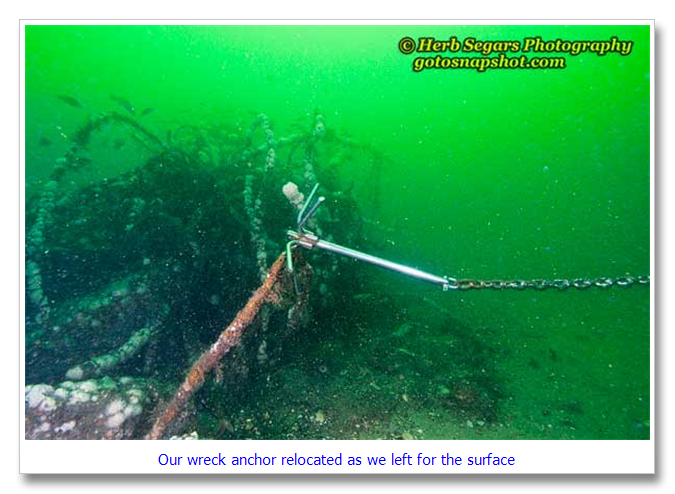
As luck has it, we got to the Venturo and no one was on it. Hooray! We made our second dive there and I will tell you all about it in my next blog post. If you want to see more photos from the Restorer Site, please click here to visit my Photo Gallery.
© 2009, Herb Segars. All rights reserved.


Thanks for your blog.